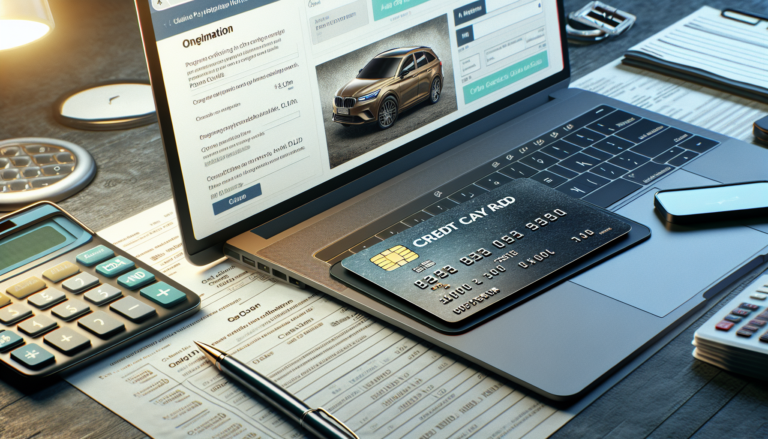Introduction to Paying Car Payments with a Credit Card
Paying car payments with a credit card is not a common practice, as most auto lenders do not directly accept credit card payments. However, there are some indirect methods that allow you to use your credit card to make your monthly car payments. In this article, we’ll explore the potential benefits and drawbacks of using a credit card for car payments, the various methods available, and important financial considerations to keep in mind.
Why Consider Using a Credit Card for Car Payments?
There are a few reasons why someone might consider using a credit card to pay their car loan:
- To take advantage of credit card rewards programs, such as cashback or travel points
- To manage cash flow by delaying the actual payment
- As a short-term solution if you’re facing financial difficulties
However, it’s crucial to weigh these potential benefits against the drawbacks and risks involved.
Potential Benefits and Drawbacks
Using a credit card for car payments can offer some advantages, but it also comes with significant risks:
| Benefits | Drawbacks |
|---|---|
| Earn rewards points or cashback | High fees (cash advance, convenience fees) |
| Delay payment to manage cash flow | Increased credit utilization can hurt credit score |
| Short-term solution for financial difficulties | Risk of accruing high-interest credit card debt |
It’s important to carefully consider your financial situation and the terms of your credit card before deciding to use it for car payments.
Methods to Pay Car Payments with a Credit Card
While most auto lenders don’t directly accept credit card payments, there are a few indirect methods you can use:
Direct Payments to Lenders
Some auto lenders may allow you to pay your car loan with a credit card, but this is rare. If your lender does accept credit card payments, be prepared to pay a convenience fee (usually 2-3% of the payment amount) in addition to any interest charges from your credit card issuer.
Using Mobile Payment Apps
Mobile payment apps like Venmo and PayPal can be used to indirectly pay your car loan with a credit card. Here’s how it works:
- Link your credit card to the mobile payment app
- Send money to a trusted friend or family member
- Have them make the car payment on your behalf
Keep in mind that apps like Venmo charge a 3% fee for credit card transactions.
Money Transfer Services
Money transfer services such as MoneyGram and Western Union sometimes allow you to pay bills, including car payments, with a credit card. However, these services typically charge transaction fees that can add up quickly.
Financial Considerations and Risks
Before using a credit card to make your car payment, it’s essential to understand the potential financial implications.
Understanding Fees and Interest Rates
Using a credit card for car payments often involves additional fees:
- Cash advance fees: If your credit card issuer treats the payment as a cash advance, you’ll likely pay a fee (often 3-5% of the transaction amount)
- Transaction fees: Third-party services like mobile payment apps and money transfer services charge fees for using a credit card
- Interest rates: Unless you pay off your credit card balance in full each month, you’ll accrue interest charges at the card’s APR
These fees can add up quickly, making the cost of using a credit card for car payments quite high.
Impact on Credit Score
Using a credit card to pay a large expense like a car payment can significantly increase your credit utilization, which is the amount of available credit you’re using. High credit utilization can negatively impact your credit score. As a general rule, it’s best to keep your credit utilization below 30%.
Alternative Strategies
If you’re struggling to make your car payments, using a credit card is not the only option. Consider these alternatives:
Balance Transfers
If you have a 0% intro APR credit card, you may be able to transfer your car loan balance to the card. This can give you a temporary reprieve from interest charges, but balance transfers usually come with a fee (often 3-5% of the transferred amount).
Refinancing Your Auto Loan
If your credit has improved since you initially took out your car loan, refinancing could help you secure a lower interest rate and reduce your monthly payments. Shop around to find the best rates and terms.
Borrowing from Friends or Family
If you have trusted friends or family members who are willing to lend you money, a personal loan from them could help you avoid the high fees and interest rates associated with using a credit card.
Conclusion
Final Thoughts and Recommendations
Using a credit card to pay your car payment can be tempting, especially if you’re facing financial difficulties or want to earn rewards points. However, the high fees and interest rates associated with this approach make it a costly option in the long run.
Before using a credit card for car payments, carefully consider:
- The fees involved (cash advance fees, transaction fees, interest charges)
- The impact on your credit utilization and credit score
- Your ability to pay off the credit card balance quickly to avoid accruing debt
In most cases, it’s best to explore alternative options like refinancing your auto loan, negotiating with your lender, or seeking a personal loan from trusted friends or family members. These strategies can often provide relief without the high costs associated with using a credit card.
See also:
- How to Lower Minimum Payment on Credit Card: Tips and Strategies
- What Do You Need to Open a Bank Account at Bank of America?
- How to Get an American Express Card: A Step-by-Step Guide
- How Is Credit Card Minimum Payment Calculated? Understanding the Process
- What Credit Score Do You Need for American Express Cards?






